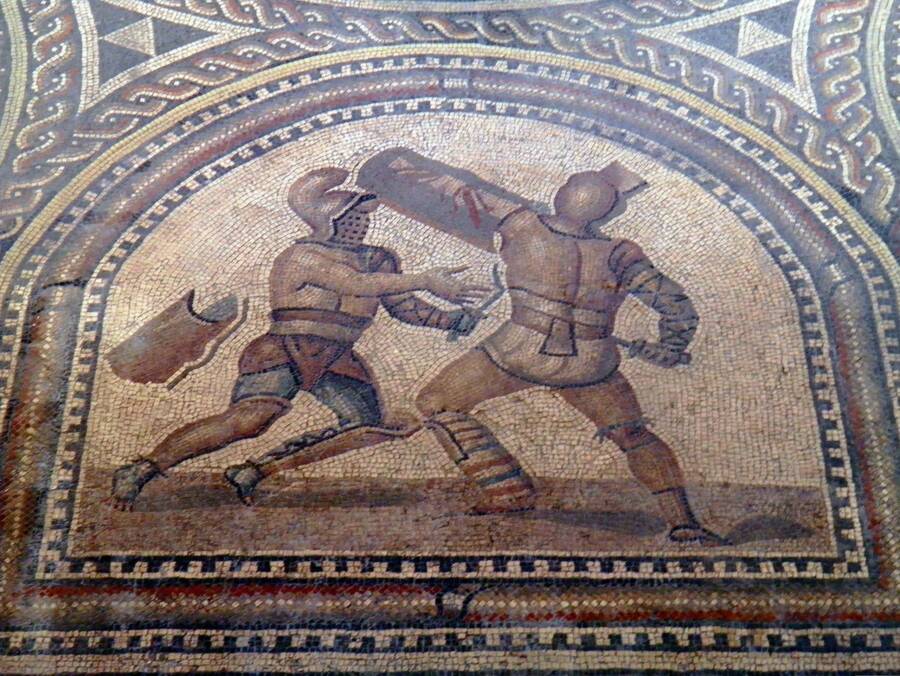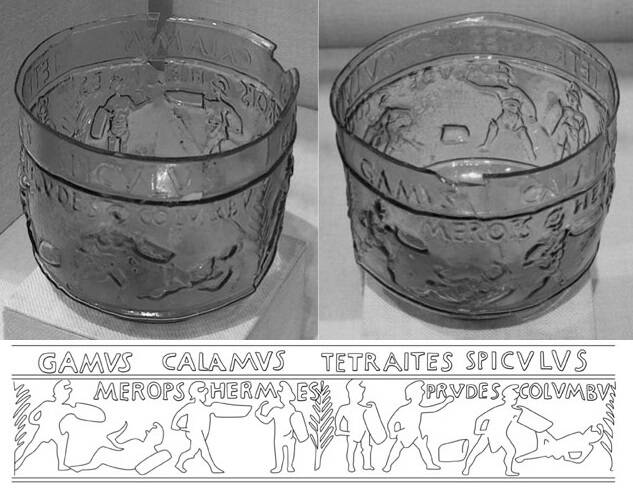Tetraites, The Gladiator Whose Image Appeared Across The Roman Empire

Carole Raddato/Wikimedia CommonsA Roman mosaic of two gladiators (not Tetraites and Prudes) locked in battle.
Like Marcus Attilius, Tetraites’ story was largely preserved in art unearthed by archaeologists. As such, many details of his life are lost.
It’s unknown where Tetraites came from or how many bouts he survived, but archaeologists have uncovered glass vessels with his name across the Roman Empire, including in France, England, and Hungary. His likeness also appeared in a gladiatorial scene painted on a column in Pompeii (though, sadly, it was destroyed during World War II).
Most of these depict a bout between Tetraites and another famous gladiator named Prudes.

Metropolitan Museum of ArtA glass bowl with depictions of gladiators, including Tetraites and Spiculus.
According to Gladiators in Pompeii, the column shows: “Two gladiators in different phases of combat… [One] gladiator was on the ground, and the other was about to land a mortal blow. The fish portrayed on their helmets showed that both gladiators were murmillones. Above their heads were the names Tetraites and Prudes and a list of the fights they had sustained.”
The book adds: “The two gladiators were very famous… In all these depictions Tetraites is the victor and Prudes is the vanquished.”
It’s possible that the column where the painting was found was originally part of a building where slaves became gladiators; Tetraites and Prudes may have been painted there after they visited Pompeii for a match.





